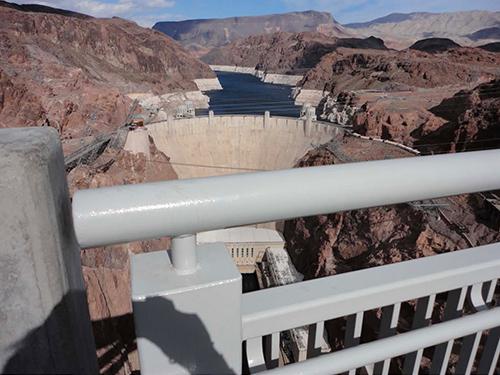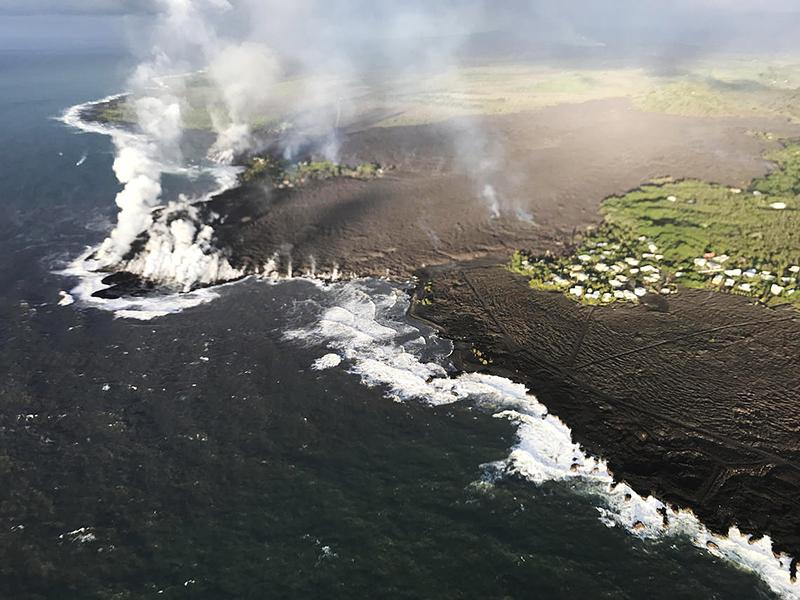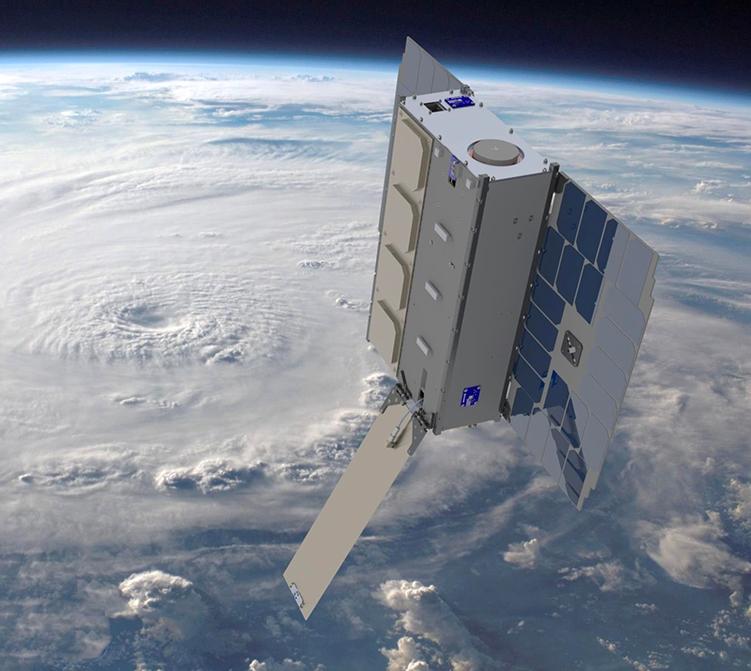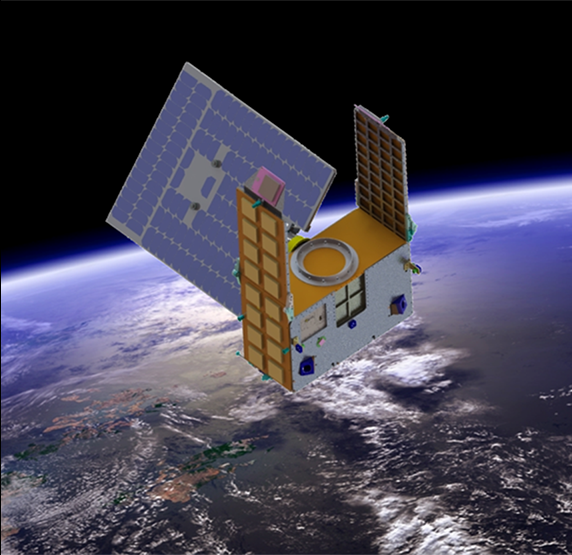Tree-Mendous Timber Evaluation
Originating Technology/ NASA Contribution
Funded and administered by NASA, the Affiliated Research Center (ARC) program transfers geospatial technologies from the Space Agency and participating universities to commercial companies, non-profit and trade organizations, and tribal governments. The origins of the ARC program date back to 1988, when NASA’s Stennis Space Center initiated the Visiting Investigator Program to bring industry closer to spatial information technologies. The success of this trial program led to an expansion into the ARC program, whose goal is to enhance competitiveness of U.S. industries through more efficient use of remote sensing and related technologies.
NASA’s ARC program served as the foundation for the development of International Hardwood Resources, which then grew into Falcon Informatics with the acquisition of a technology from a European software company and a change of business models. Doylestown, Pennsylvania-based Falcon Informatics is now a world-leading information services company that combines in-depth timber industry experience with state-of-the-art software to serve the needs of national governments, international paper companies, and timber-investment management organizations.
Partnership
In 1997, Adam Rousselle founded International Hardwood Resources as a log-exporting and consulting company. Not long after, Rousselle found that it had become exceedingly difficult to find high-value pockets of timber (also known as timber “stands”) to supply his company, so he decided to investigate the possibility of locating hardwoods through remote sensing. Essentially, Rousselle was looking to locate and purchase greater quantities of privately owned standing timber, because alternative sources—such as buying timber from auctions or other consultants—were prohibitively expensive. By locating, identifying, and evaluating trees through automatic interpretation of remote images, such as aerial photographs, Rousselle hoped to reduce the cost of pinpointing timber stands and increase the amount of cheaper, internally-sourced timber.
As a veteran of the Gulf War with experience in counter-intelligence, Rousselle was very familiar with the advances of satellite surveillance and high-resolution photography. This led him to NASA, where he learned about opportunities available through the ARC program. NASA granted him a research contract to perform a feasibility study to determine whether there would be potential for his concept to become commercially viable. The study was carried out at the School of Environmental Science at the State University of New York (SUNY), Syracuse, with guidance from the late Dr. Paul Hopkins, former director of the ARC program at this institution.
During the research, Rousselle, Hopkins, and the ARC investigation team utilized Landsat Thematic Mapper imagery (30-meter ground sample distance) in a preliminary classification to define hardwood forest areas in the Allegheny Forest region of northwestern Pennsylvania. These regions were then classified to a higher level using Airborne Terrestrial Applications Sensor imagery (2.5-meter ground sample distance). Spatial analytical methods resident within a geographic information system were then added to the mix to define areas where logging might have been limited in the past due to the areas’ high slopes. The remote sensing analyses were combined in the attempt to highlight areas that had a higher potential to contain valuable lumber.
The NASA-supported study at SUNY yielded encouraging results, showing that International Hardwood Resources could identify high-value hardwood trees using remote sensing, while additionally reducing environmental degradation by decreasing unnecessary logging and increasing the use of low-impact, selective harvesting techniques, such as helicopter logging. The company concluded from this project that it should invest time and capital in the development of a deductive logic system that renders an approximate value of a given timber stand, based on customer needs.
Product Outcome
In developing the logic system, Rousselle identified a “tremendous” opportunity to expedite the time-consuming task of manually interpreting the remotely sensed images. This occurred in June 2001, when Rousselle visited a Finnish company that developed a software application to detect individual tree crowns in aerial photography. The company was willing to sell the software to him because it had “never fully leveraged” its capabilities. Rousselle acquired the software and hired a software team to integrate it into the system that would be the nucleus of his revolutionary remote-sensing service. With the successive hiring of expert foresters and geographic information system (GIS) pros, Falcon Informatics was born.
Without ever setting foot in a forest, paper companies, real estate investors, government agencies, public forest managers, and many other entities can improve the accuracy and usability of GIS data through Falcon Informatics’ services. In combination with traditional ground-sampling, Falcon Informatics can rapidly collect a wealth of timber inventory and management data. The company’s innovative timber assessment services are based on the Forest Assessment and Classification Tool (FACT) software that automatically interprets aerial photography and satellite imagery, unlike the costly and arduous manual efforts of old. FACT enables Falcon Informatics to count and analyze each individual tree—hardwood or softwood—anywhere in the world. The process begins when the company flies over a selected geographic area, capturing a comprehensive, “bird’s-eye” view of the landscape. FACT then performs an in-depth analysis of the captured imagery to identify viable timber stands and measure ground-sampled trees. The data resulting from this analysis are used to calculate the composition and volume of timber in the selected area.
Falcon Informatics’ systematic approach eliminates many opportunities for human error and produces consistent and reliable results. The company can even correct existing, manually generated timber stand boundaries to reflect the correct geographic position. These services provide instant return on investment by improving the quality of the timber-management information, thereby accelerating the ability of forest managers to optimize growth and yield. Forestry teams can avoid costly mistakes and concentrate on improving productivity instead of spending wasteful hours trying to redefine forests.
“Foresters have studied the relationship between crown size and volume for a long time,” Rousselle explains. “However, historically there has been no way to take advantage of this relationship. FACT makes this possible by allowing consistent crown measurements on a larger scale.”
From an environmental standpoint, FACT helps to define stand-level health statistics, mitigate the threat of wildfires, and monitor the impact of insects and disease. Also, the proprietary tool can identify and document environmentally sensitive areas like Riparian buffers—areas of forested land adjacent to a stream, river, marsh, or shoreline which form the transition between land and water environments. Riparian buffers play an important role in maintaining the health of these waters by improving water quality and providing habitats for wildlife and fish.
In 2003, Falcon Informatics received contracts with the U.S. Army’s Fort Benning, Georgia, and Fort A.P. Hill, Virginia, to deliver timber inventory and GIS data on over 250,000 acres of military base forestland, using FACT. The forest resource manager at Fort Benning was first introduced to Falcon Informatics’ services in 2002 when Rousselle spoke to the committee of U.S. Department of Defense foresters at the Society of American Foresters’ annual convention. “When I saw the work they were doing in other countries and here in the United States for several private companies, I was eager to learn more about how we could take advantage of it,” the forest resource manager noted, adding that most people are not aware of how critical forest health is to the training and preparedness of U.S. soldiers.
Falcon Informatics has also formed strategic partnerships with several companies in order to create a larger pool of certified FACT users. Partners include Dendron Resource Surveys Inc., one of Canada’s leading forestry consulting companies, and Emerge, a subsidiary of ConAgra, Inc., that supplies high-quality, digital, orthorectified, mosaic imagery products. The partnerships are focused on worldwide dissemination of Falcon Informatics’ innovative hardwood and softwood analysis services.
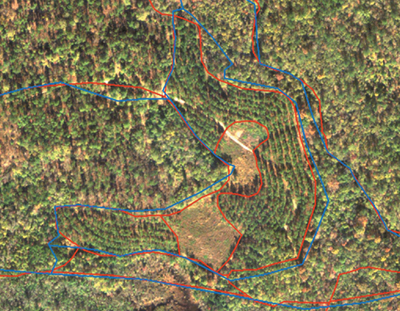
Boundaries are corrected by Falcon Informatics’ automated image analysis (before and after; the blue lines represent the customer’s boundary lines, established by conventional surveying techniques, and the red lines represent Falcon Informatics’ corrected boundary lines).










